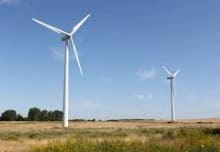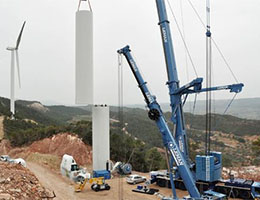 Aiolos is a Greek term that was used to refer to Aeolus , god of the winds. The word became Aiolikós , which passed into Latin as Aeolĭcus . It came to our language as Aeolian .
Aiolos is a Greek term that was used to refer to Aeolus , god of the winds. The word became Aiolikós , which passed into Latin as Aeolĭcus . It came to our language as Aeolian .
This adjective refers to what is linked to the wind : the air current that is generated naturally in the atmosphere due to factors such as differences in temperature or pressure. What is produced thanks to the action of the wind is classified as wind power.
Wind energy is the type of energy obtained from the wind. This is kinetic energy produced by air currents and which can then be transformed into useful energy for different activities.
A wind generator is called, in this framework, the generator that produces, through a propeller, mechanical energy from the kinetic energy of the wind and then, through an alternator, generates electrical energy .
The set of wind generators that are installed in a certain space is known as a wind park . These parks are developed in strategic locations to take advantage of the wind and convert wind energy into electrical energy .
Many wind farms are located at sea, where intense winds are often recorded. In any case, since the wind is intermittent, there are times when it is not possible to obtain the desired power output. As a plus point, wind energy is renewable energy : it comes from a source (the wind) that does not run out.
On the European continent, on the other hand, offshore wind farms are becoming more and more common. Depending on the characteristics of the wind and the surface available to establish the park, the number of wind turbines that comprise it varies.
Before carrying out the assembly of a property of this type, it is necessary to study the wind for a few months, generally more than a year. For this purpose, some anemometers and weathervanes are located, which allow the relevant data to be collected and then draw a graph with the directions of the winds to leave a record of the speed and the directions in which it predominates.
 The design chosen for a wind farm has a direct impact on the amount of energy it can provide. Other aspects that also affect this value are the location of the turbines. The first wind farms had turbines whose designs did not offer a level of efficiency as high as the current ones, and they could not adapt to the instability of the wind, which causes variations in its speed and direction.
The design chosen for a wind farm has a direct impact on the amount of energy it can provide. Other aspects that also affect this value are the location of the turbines. The first wind farms had turbines whose designs did not offer a level of efficiency as high as the current ones, and they could not adapt to the instability of the wind, which causes variations in its speed and direction.
Although wind farms do not produce a considerable environmental impact, especially when compared to other energy generation establishments, the visual and acoustic pollution caused by wind turbines is undeniable. Likewise, certain animals are harmed by the presence of the turbines, since they do not clearly see the blades when they are fully operational and this leads them to impact against them.
There are wind farms in many parts of the world. In Europe they enjoy special acceptance by the public, since their governments usually support the development of renewable energies. Countries such as England, Scotland, Spain, Portugal and Germany , among others, make significant monetary investments in the construction of these energy generation centers. Germany has the largest number of parks in the world, while Huelva has the largest park, followed by Portugal and Scotland.
Aeolian, on the other hand, is used synonymously with Aeolian : a town in Ancient Greece . The dialect spoken by the Aeolians is also called Aeolian.
